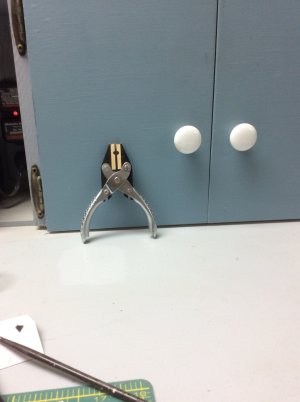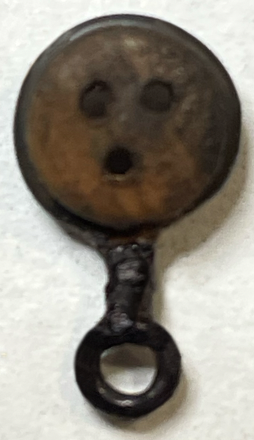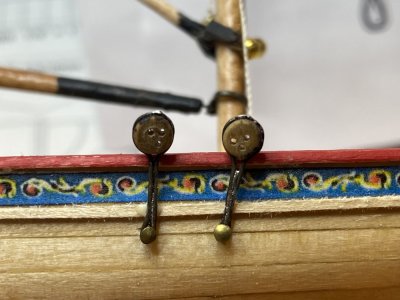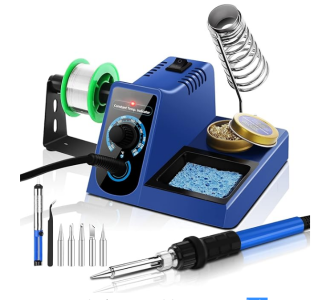Is there any personal experience with soldering copper wire close to a deadeye for a chainplate build? More specifically I plan to make my own scratch built chainplate for my current build (HMS Surprise) that is more correct than the Artesania provided parts and plan detail. I have the following concerns:
• Will soldering this close to a deadeye cause significant burning (or discolouration) of the deadeye itself? (photo attached below)
• I plan to have the soldering joint hidden behind the 3mm thick walnut chainwale support plate as the solder will not be affected by the blackening process
• If I immerse the finished unit in blackening fluid, will the boxwood deadeye be stained by the fluid? I intend to stain the deadeye AFTER blackening the copper wire.
Suggestions please
• Will soldering this close to a deadeye cause significant burning (or discolouration) of the deadeye itself? (photo attached below)
• I plan to have the soldering joint hidden behind the 3mm thick walnut chainwale support plate as the solder will not be affected by the blackening process
• If I immerse the finished unit in blackening fluid, will the boxwood deadeye be stained by the fluid? I intend to stain the deadeye AFTER blackening the copper wire.
Suggestions please











